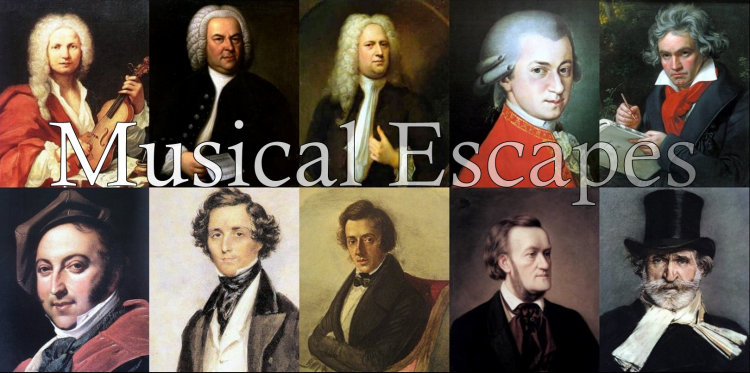GO TO: [A–C] [D–F] [G–K] [L–N] [O–R] [S–U] [V–Z]
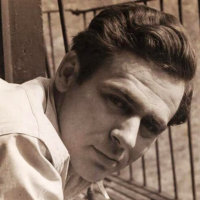
Agee's autobiographical novel about growing up in Knoxville, A Death in the Family (1957), won a posthumous Pulitzer Prize. He was also co-author with photographer Walker Evans of the Depression documentary book Let Us Now Praise Famous Men (1943), an influential film critic for Time Magazine, and screenwriter of The African Queen. 2.
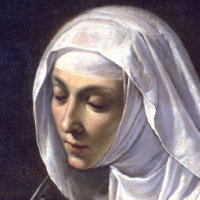
Raffaella Aleotti showed a precocious musical talent, and her teacher suggested she enter the convent of San Vito in Ferrara to further her skills. She published a number of sacred text settings. She may have been either the sister or indeed the same person as Vittoria Aleotta, a nun who also published sacred settings around the same time. The image, which has been used on CD covers, is almost certainly not her portrait. 1.
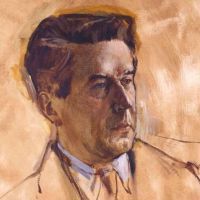
Like most choreographers, Sir Frederick Ashton began as a dancer, and continued performing even as his fame blossomed as a choreographer. He became artistic director of the Royal Ballet in 1963, but had worked with the company and its various predecessors since 1935, responsible for creating many of the works that are the foundations of English ballet today. 2, 4.
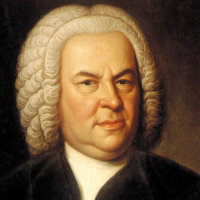
The towering genius of German music in the earlier 18th century, Bach was most famous in his time as an organist and choirmaster, most notably at the Thomaskirche in Leipzig. His work includes two Passions, numerous cantatas, and keyboard and orchestral works that codify and extend the possibilities of counterpoint in his time. 1, 4.

He wrote the score for Martha Graham's Cave of the Heart, on the Medea legend. He has written in most other genres, including opera (Antony and Cleopatra and Vanessa), and is probably most celebrated for his Adagio for Strings (1938). 2.
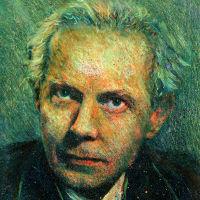
One of the most important composers of the early 20th century, Bartok forged his own path, combining an exhaustive study of Eastern European folk music with a personal modernism that was never doctrinaire. His early opera Duke Bluebeard's Castle (1911) is a landmark of musical expressionism. Important later work includes 6 ground-breaking string quartets, 3 piano concertos, 8 volumes of progressively challenging piano pieces he called Mikrokosmos and his late Concerto for Orchestra. He died in NYC. 3.
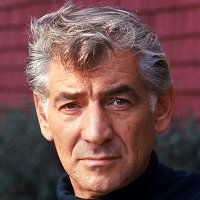
Winning fame relatively young as conductor of the New York Philharmonic, Bernstein also reached wide audiences with his music lectures on television. His work as a composer ranges from Broadway musicals such as West Side Story (1957) through symphonies, operas, and his multi-media Mass (1971). 4.

Bock began writing musicals while a student at the University of Wisconsin. His partnership with lyricist Sheldon Harnick produced the successes Fiorello! (1959) and Fiddler on the Roof (1964), among several others. 1.
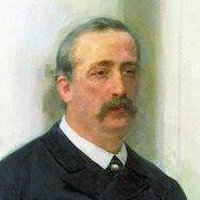
A medical doctor and research chemist, he only composed music as an amateur (as did many of his contemporaries in the "mighty handful"). But works like his tone poem In the Steppes of Central Asia (1889), his unfinished opera Prince Igor, and some of his chamber music sing in a distinctive and often haunting Russian voice. 3.
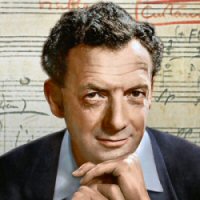
Arguably the leading opera composer of the mid-20th century, Britten's major operas have included Peter Grimes (1945), Billy Budd (1951), Gloriana (1953), A Midsummer Night's Dream (1960), and Death in Venice (1973), plus many stage works for smaller forces. He was equally active as a composer of instrumental music and text settings, and latterly as a conductor and accompanist. 2.
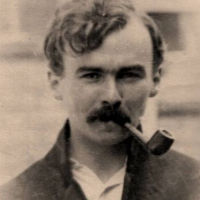
Critics have suggested that Butterworth might have become the greatest of the generation of composers that included Vaughan-Williams and Holst, had he not been killed on the Somme in his early twenties. Like his contemporaries, he collected folk song and was inspired by the English countryside. His few works include a song cycle and orchestral rhapsody based on Housman's Shropshire Lad and the tone-poem The Banks of Green Willow. 3.
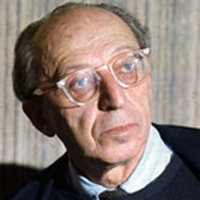
Trained in Paris, Copland began writing in the style of the European avant garde, but in his ballet commissions in the 1930s and 1940s, such as Billy the Kid, Rodeo, and Appalachian Spring, he developed the open folk-inflected style that has become, for many people, the sound of American music. 3.
GO TO: [A–C] [D–F] [G–K] [L–N] [O–R] [S–U] [V–Z]
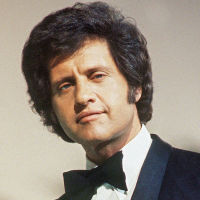
Dassin was born in Brooklyn, son of an American violinist and the French film director Jules Dassin. When the latter fell victim to the Hollywood blacklist in 1950, the family moved to France, where Joe laid the groundwork for what was to be a 16-year career, not only in France but internationally. 4.

He founded the Ballets Russes in 1909. His company dominated the Parisian scene for at least a decade, and gave opportunities to such figures as the dancer Vaslav Nijinsky, the choreographer George Balanchine, the designer Léon Bakst, and the composer Igor Stravinsky. 2.
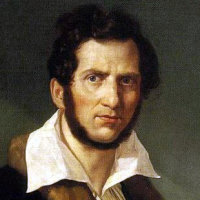
One of the leading composers of historical and romantic operas in the bel canto era, including a trilogy featuring Tudor Quens, plus comedies in both Italian and French, Donizetti nonetheless began his career with a mythological scene, Pygmalion. 2.
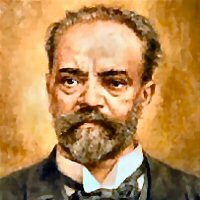
The best known of Czech composers, Dvorak composed nine symphonies and numerous chamber works. From 1885 to 1888, he was director of a new conservatory in Manhattan; he later became director of the conservatory in Prague. Of his ten operas, only the fairy-tale Rusalka (1901), a variant on the Little Mermaid story, has had true international success, cropping up in an astonishing range of productions in the last few decades. 3.
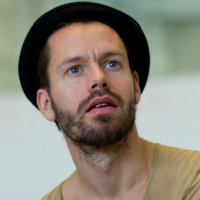
After five years as a professional dancer in Sweden and Holland, Ekman began a free-lance career as a choreographer when he was 21. His works, which move beyond traditional ballet technique in startling and inventive ways, have been created for or taken up by companies all over Europe. 4.
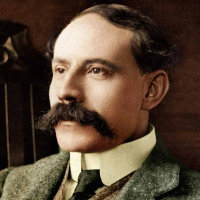
Elgar was the leading figure in English music during the late Victorian and Edwardian eras. With works such as the Enigma Variations and his concerti for violin and cello, he was one of the first English composers after Purcell to achieve an international reputation. 2.
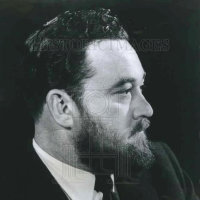
His appearances in various productions at Oxford seemed to destine Flanders for a great career as an actor, but War intervened. While serving with the Royal Navy, he contracted polio, and spent the rest of his life in a wheelchair. But this did not stop a second career as a writer for the BBC and theater—nor a third one, teamed up with composer Donald Swann to perform some of the many songs they had written together, beginning when both were pupils at Westminster School. 4.
GO TO: [A–C] [D–F] [G–K] [L–N] [O–R] [S–U] [V–Z]
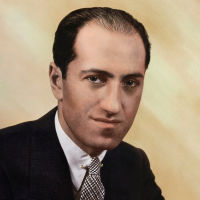
Born Jacob Gershwine in New York to Jewish emigrants from Eastern Europe, he studied piano and composition, but soon found his vocation as a songwriter, mostly with his elder brother Ira (born 1896). Most of his songs have become crossover standards, as have his orchestral works Rhapsody in Blue (1924) and An American in Paris (1928). Most of his stage works are primarily containers for his songs, but his 1935 opera Porgy and Bess is an exception, a closely-developed study of African-American life. 3.
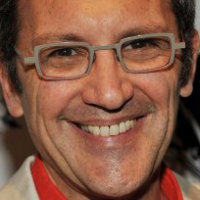
Born of an Eastern European Jewish emigrant family, Golijov has devoted his career to exploring the traditions of his various cultures, in works that cross the normal boundaries between classical, jazz, and folk music of all kinds. 1.
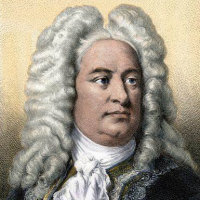
Gradually over the last half-century, Handel's 42 operas and numerous dramatic oratorios have been recognized as placing him on the level of Mozart and Verdi as an opera composer. The delay in appreciation is partly due to the fact that his preferred form, opera seria, is based almost entirely on recitative and solo arias. Born in Germany and trained in Italy, he dominated the English musical scene in the first half of the 18th century. 4.
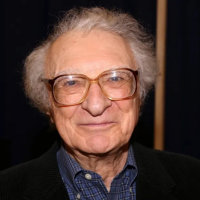
Although Harnick earned a degree in music from Northwestern, his greatest contribution was as a lyricist, especially in partnership with Jerry Bock, producing the successes Fiorello! (1959) and Fiddler on the Roof (1964), and several others. 1.

With Mozart, Haydn was the leading musical genius of the late 18th century. Equally prolific, but far longer lived, he wrote 104 symphonies, 68 string quartets, 16 operas, and 14 masses, together with the two great oratorios, The Creation and The Seasons. 4.

Born of a musical family in Alsace, Hérold spent most of his career on the music staff of one or other of the Paris opera houses. At the same time, he was a prolific composer, although few of his works have remained in the repertoire except for his opera Le pré aux clercs, the overture to his opera Zampa, and his 1828 score for the already-existing ballet La fille mal gardée. 4.
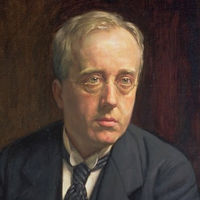
The son of a church organist of Swedish descent, Holst studied first the piano and then the trombone. With Ralph Vaughan Williams, he was largely responsible for the revival of interest in English folk music at the turn of the century. He worked most of his life as a church musician and in education, but wrote numerous works, of which The Planets (1918) is the largest and most famous. 3.
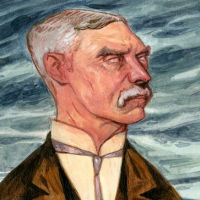
A classics professor at Trinity College, Cambridge, AE (Alfed Edward) Housman played down his work as a poet, yet his 1896 collection A Shropshire Lad captured public attention, both for its picture of rural life in Shropshire and for its persistently elegaic tone that caught the malaise of the end of the century and proved eerily prophetic of the First World War. 3.

Janácek turned to opera fairly late in his career, but his half-dozen mature works in the medium place him in the forefront of opera composers of the 20th century, not only for their distinctive musical style but also their unusual structure and dramatic innovation. Among them are: Jenufa (1903), Káta Kabanová (1921), The Cunning Little Vixen (1923), The Makropoulos Affair (1925), and From the House of the Dead (1928). 3.
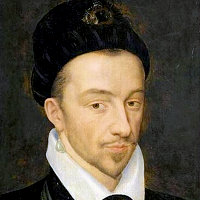
Most of Janequin's large output consisted of secular chansons, often with striking onomatopoeic imitation of their subjects, which made him exceptionally popular in his day. 4.
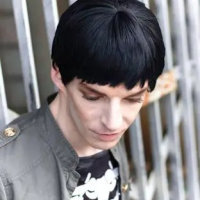
After training in his native Sweden, Karlsson moved to New York City, where he continues to work, writing music for video games, films, and several ballets by his friend Alexander Ekman. 4.
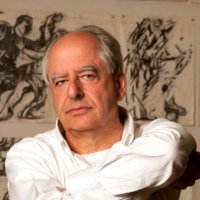
Although he studied charcoal drawing as a child, Kentridge originally hoped to become an actor, and studied at the Théâtre Jacques Lecocq in Paris. Realizing his limitations as a performer, he stuck to art as a career, producing a series of works on paper and film, often with themes of social justice. In later years, his two interests have combined in a series of opera productions combining live action and film, such as his Wozzeck and Lulu for the NY Met. 2.
GO TO: [A–C] [D–F] [G–K] [L–N] [O–R] [S–U] [V–Z]

Born in Los Angeles, but now living and working in New York, Lang was a co-founder of the musical collective Bang on a Can. In 1908, he was awarded the Pulitzer Prize for Music for The Little Match Girl Passion, a retelling of the Andersen story using the structure of a Bach Passion. 1.
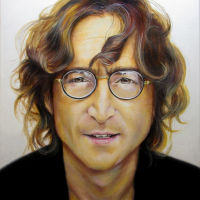
Born in Liverpool, Lennon is best known as co-founder of the Beatles in 1960 and, with Paul McCartney, one half of a songwriting partnership considered the most successful in history. His increasing drug use and preoccupation with multi-media artist Yoko Ono (whom he married in 1968) may have been a factor of the breakup of the band in 1969. In his last years, he became very active in anti-war protests, living in NYC, where he was murdered in 1980. 1.
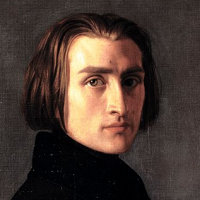
Liszt was the foremost piano virtuoso of his time, playing three or four concerts a week during his heyday during the 1840s, and much of his prolific output—including notably his set of 19 Hungarian Rhapsodies—is designed for display. But he was also a generous supporter of numerous other musicians, including Chopin, Schumann, Berlioz, Grieg, Borodin, and Wagner (who became his son-in-law). Many of his compositional techniques in his later works paved the way for advanced composers at the turn of the century, 3.

Sir Peter Maxwell Davies was Master of the Queen's Music (composer laureate) for the last decade of his life, celebrating his by-then establishment status. But he began as a radical, writing works such as Eight Songs for a Mad King that stretched the boundaries of performance practice. Like Britten, he has always liked working for specific performers and places, including many works for his adopted home of Orkney to the North of Scotland. 2.
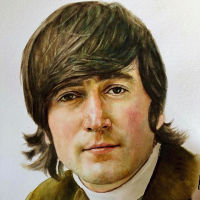
Paul McCartney was a bass-guitarist, pianist, lead singer and songwriter with The Beatles, which he founded with John Lennon in 1960; his songwriting partnership with Lennon was the most successful in history. Although the son of a jazz musician, he was largely self-taught, but his natural musicianship, perfect pitch, and taste for exploration soon made him the group's de facto artistic leader, and the one most responsible for its artistic innovations. He issued his first solo album in 1970, about the time the band broke up, and later founded his own successful group, Wings. He was knighted in 1997. 1.
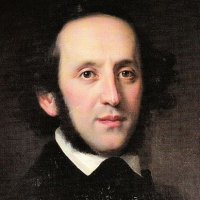
A major figure in the Romantic movement and a precocious talent, he wrote many of his best-known works (such as the Midsummer Night's Dream overture) while still in his teens. By virtue of his ten separate residencies in England or Scotland, and the works he premiered there, he almost qualifies as a virtual British composer. 3.
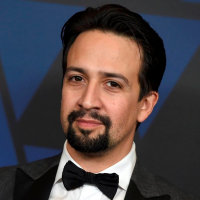
As the playwright, lyricist, composer, and star performer in his 1915 mega-hit Hamilton, Miranda became an unheard-of quadruple-threat on Broadway. He had shown many of the same talents, however, in his 2005 musical In the Heights, and has since developed his career further into film (both acting and directing). 2.

Both as leader of his own company since 1980 and in collaborations all over the world, Morris has created works noted for their expressivity, humor, and power to surprise. Morris is exceptional in his reponse to music of all periods, which had led him into opera directing and even to conducting. 4.

A child prodigy as both performer and composer, Mozart produced an extraordinary body of work in all genres over a relatively short life. He wrote the greatest of his many operas after moving to Vienna: three collaborations with Lorenzo da Ponte—The Marriage of Figaro (1786), Don Giovanni (1787), and Così fan tutte (1790)—framed by two German Singspiels: The Abduction from the Seraglio (1782) and The Magic Flute (1791). 2, 4.
GO TO: [A–C] [D–F] [G–K] [L–N] [O–R] [S–U] [V–Z]

A virtuoso in the manner of a modern rock star, Paganini drew huge audiences wherever he played. Such was his virtuosity that he was rumored to be in league with the Devil. But there was nothing meretricious about his technique, which expanded greatly upon traditional practice, nor in the many works he wrote to play himself and challenge others. 2.
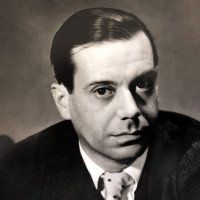
Unlike many Broadway composers, Porter wrote not only the music but the lyrics for his songs, and these are notable for their wit, clever rhyming, and encyclopedic range of reference. In addition to numerous standalone songs that became standards, he also wrote musicals such as Anything Goes (1934), Kiss Me, Kate (1948), and Can-Can (1953). 3.
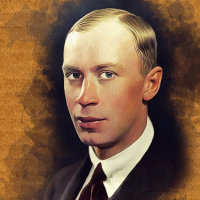
With Igor Stravinsky, he is surely the greatest Russian composer of the earlier 20th century, but with two major differences: he returned to Russia, and produced most of his work in traditional forms such as sonatas, symphonies, and concertos. 4.
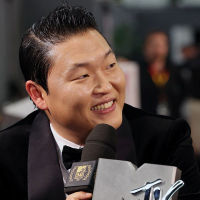
Psy is the performing name of rapper Park Jae-Sang,. His satirical 2012 video Gangnam Style was a worldwide sensation and was, for five years, the most-viewed video on YouTube. 4.
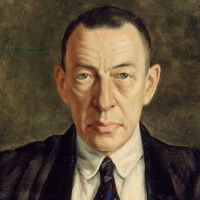
Considered one of the finest pianists of his day [Wikipedia], Rachmaninoff most frequently appears on concert programs for his four monumental piano concertos and the Rhapsody on a Theme by Paganini. His music is noted for its rich late-Romantic coloring, lush harmony, and gift for melody. He moved to America after the Russian Revolution and died in Beverly Hills. 4.
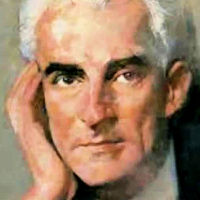
Though often grouped with Debussy as a musical Impressionist, Ravel was very much his own man. As a composer with a strong sense of tradition, he often wrote in older dance forms. As a virtuoso pianist, he wrote piano music of transcendent difficulty that extended the range of piano techniques. And as a master orchestrator, he enriched 20th-century music with some of its most vibrant colors. 2.

Reich's contribution to the minimalist movement was through his concept of "phase shifting," simple patterns which change perceptibly as one listens. His Music for 18 Musicians (1976) and Tehillim (1981) have become minimalist icons. His Different Trains (1988) for taped voices and string quartet, is a striking musical memorial to victims of the Holocaust. 1.
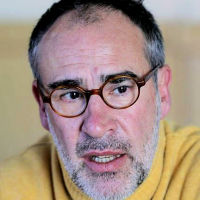
Ribeiro founded his own company in 1995, and remains its artistic director. Besides work overseas, notably with the Nederlands Dans Theater, he has been ballet master of other Portugese companies such as the Ballet Gulbenkian (2003–05) and the National Ballet Company (2016–18). 2.
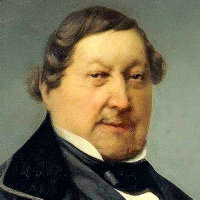
Rossini's fame rests on his 39 operas, especially the comedies, all written while he was still in his thirties. In 1829, fter writing Guillaume Tell, one of the foundation stones of French grand opéra, he essentially retired, settling in Paris, and writing only occasional pieces plus his masterpieces of sacred music, the Stabat Mater of 1842 and Petite Messe solennelle of 1864. 1, 4.
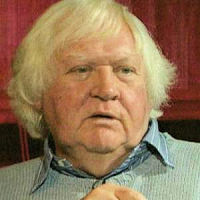
Between 1959 and 1970, Russell directed arts documentaries for the BBC, fighting to include live actors and a narrative script, often focusing on more controversial details. His films about Debussy, Delius, Mahler, Tchaikovsky, Liszt and others increasingly pushed the limits for a musical bio-pic. Meanwhile, the breadth of his conception and ever-evolving flamboyant style earned him commissions in Hollywood such as Women in Love (1969), The Devils (1971), Tommy (1975), and a film version of Sandy Wilson's The Boy Friend (1971). 2.
GO TO: [A–C] [D–F] [G–K] [L–N] [O–R] [S–U] [V–Z]
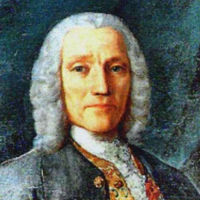
The son of the major opera composer Alessandro Scarlatti (1660–1725), Domenico became one of the influential composers for the harpsichord, for which he wrote 555 single-movement sonatas of extraordinary range. He spent most of his career as court composer in Spain, although he also worked in Rome, Warsaw, London, and Lisbon. 2.
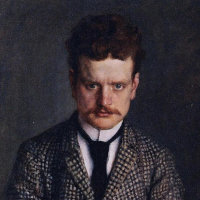
Sibelius "is widely regarded as his country's greatest composer, and his music is often credited with having helped Finland develop a national identity during its struggle for independence from Russia" [Wikipedia]. In addition to his seven symphonies, at least two of which have become repertoire standards, he wrote a number of tone poems based on Finnish history and myth, such as Finlandia, Tapiola, the Lemminkainen Legends, and the Karelia Suite. 3.
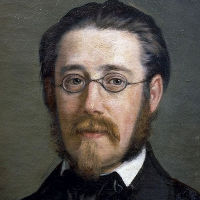
Known as the "father of Czech music," his works Ma vlast (My Homeland) and The Bartered Bride most clearly exemplify the tide of Romantic Nationalism, but only a small portion of his works have entered the international repertoire. 3.
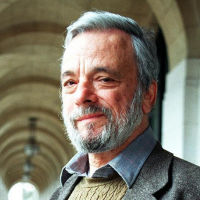
A protégé of Oscar Hammerstein's, Sondheim made his Boadway debut in 1957 as lyricist for West Side Story and Gypsy, but he soon began his own string of musicals, writing the music as well as the words, including A Funny Thing Happened on the Way to the Forum (1962), A Little Night Music (1973), and Sweeney Todd (1979). Often dealing with non-traditional subjects, these and others largely redefined the Broadway in the later 20th century. 2.
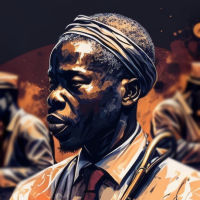
Recognized as the leading voice in Nigerian "classical" music, Sowande went to London in 1934 to study European music and went on to hold important posts as both performer and scholar. He returned to Nigeria in 1952, then moved to Howard University in Washington in 1962. All this time, he maintained a popular career as a performer, for instance as a duet partner with Fats Waller, band leader, and Hammond organist. 3.

Dissuaded from the music profession by his father, Stölzel originally studied theology, but his musical urge became too strong to resist. He learned by serving as copyist to a Leipzig composer, who first perfomed his compositions as his own. Later, in his own right, he held appointments in Breslau, Halle, Bayreuth, and Gotha, writing several operas, oratorios, masses and instrumental compositions. He is best known for the song "Bist du bei mir," for a long time attributed to Bach. 1.
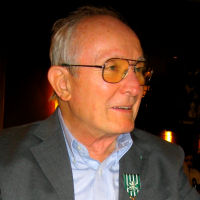
Swingle was a singer, arranger, and multi-instrumentalist. Growing up in Mobile, Alabama, he developed a special interest in jazz. He went to Paris in 1951 on a Fulbright Scholarship. While there studying piano, he joined a group specializing in scat singing, later applying this concept to the work of Bach and others with his own group, the Swingle Singers, whose recordings became popular worldwide. When he moved to London in 1973, he formed a new group, which still continues to this day. 4.
GO TO: [A–C] [D–F] [G–K] [L–N] [O–R] [S–U] [V–Z]
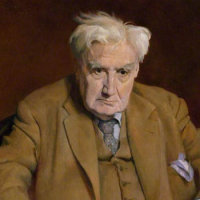
Associated with the English folk song revival, he was more than anybody responsible for giving English music its national voice. He wrote nine symphonies and numerous vocal works, including the one-act opera Riders to the Sea. His first name is pronounced "Rafe." 3.

Villa-Lobos studied the cello with his father and made an early living playing in orchestras, but as a composer he was largely self-taught. Visiting Paris in 1927–30, he picked up the prevailing neo-classicism, and returned to Brasil to write a series of pieces called Bachianas Brasilieras infusing baroque forms with Brazilian folk styles. 1.
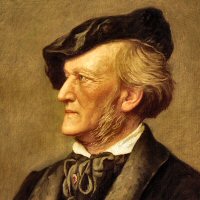
Wagner almost single-handedly transformed the nature not only of opera but also of harmony and orchestration. His 10 mature operas include Tristan und Isolde (1865), Die Meistersinger von Nürnberg (1868), and the vast tetralogy Der Ring des Nibelungen (completed 1876), for which he had a special theater built at Bayreuth. His final opera, Parsifal (1882), was written for exclusive performance at that theater. 1.

After writing material for revues, some with major artists, Wilson combined text and music for his first full-length success, The Boy Friend, which opened in 1953 and went on to break West End records; the 1954 Broadway production, introducing Julie Andrews, ran for almost two years. His later shows such as Valmouth and Divorce Me, Darling, did well but were less successful. 2.
